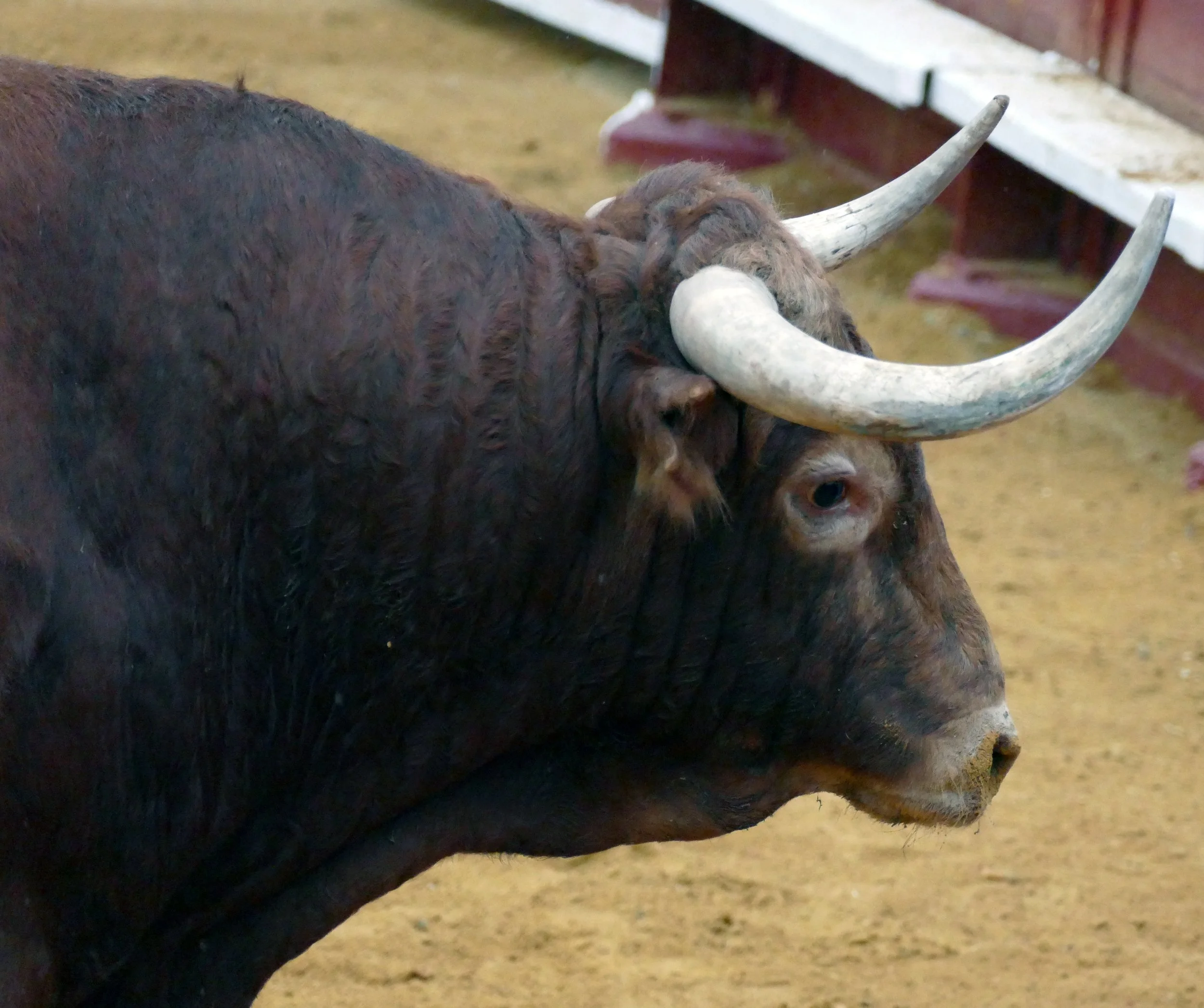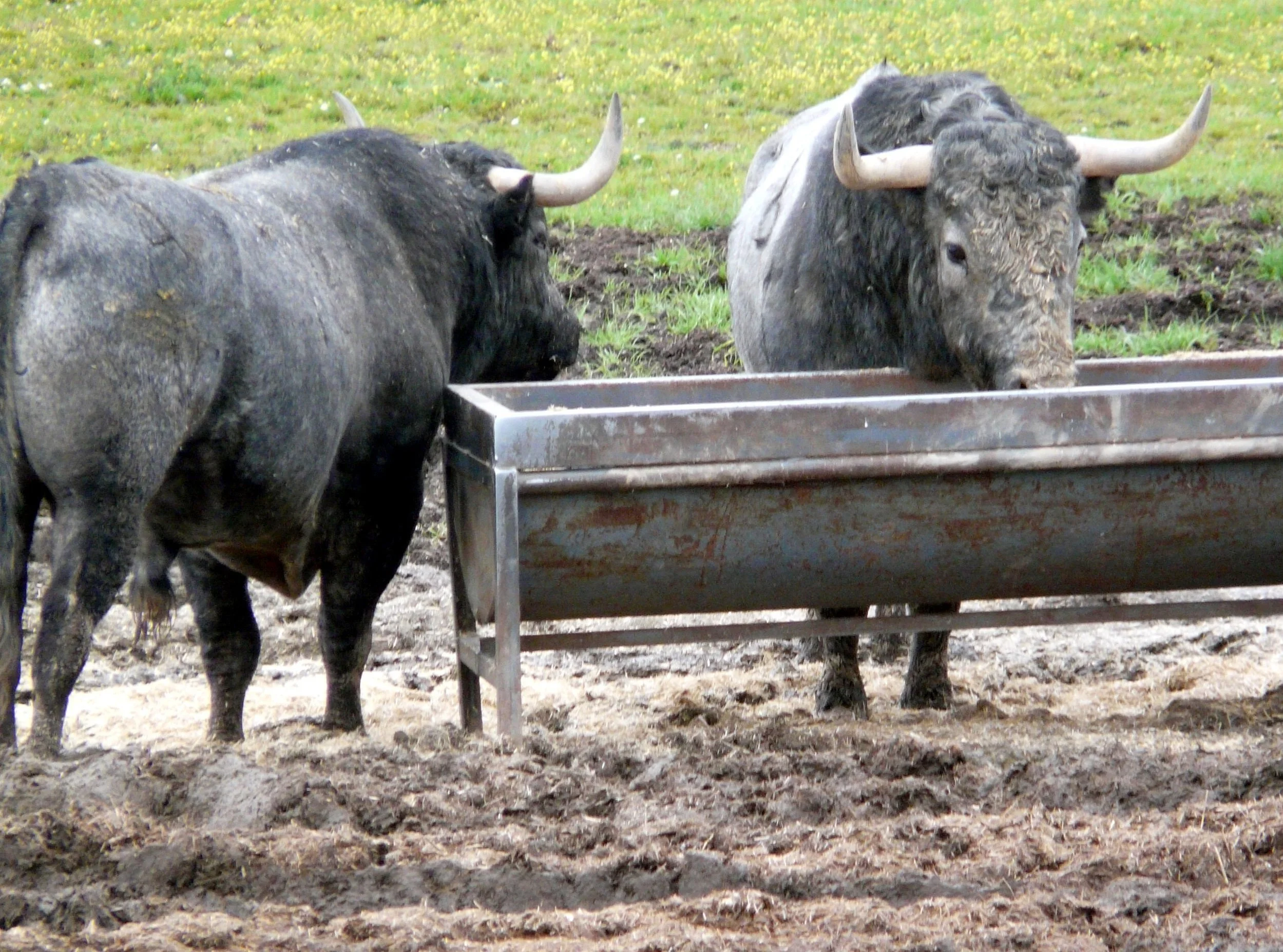Difficult times - and worse to come?(2021 Season Review Pt5)
Francisco Galache’s ‘Gandillito‘, adjudged best bull of Salamanca’s 2021 feria: thanks to Morante de la Puebla, this marked the galaches’ first corrida appearance this century
The 2021 temporada, although not a full season as such, nevertheless provides some useful comparisons on trends in terms of bull ranches from the last complete season of 2019. Here are the respective tables for the numbers of bulls of the main ganaderías fought in Spain and France in those two years:
2019
1. Núñez del Cuvillo 110
2. Juan Pedro Domecq 105
Fermín Bohórquez 105
4. Victoriano del Río 98
5. Fuente Ymbro 94
6. Victorino Martín 93
7. Alcurrucén 79
8. Jandilla 78
9. La Quinta 75
10. Zalduendo 72
11. Garcigrande 69
12. Domingo Hernández 67
El Pilar 67
14. Fndo. Peña Catalán 53
15. Montalvo 51
16. Puerto de San Lorenzo 50
Luis Terrón Díaz 50
18. Daniel Ruiz 47
2021
1. Juan Pedro Domecq 115
2. Garcigrande 96
3. Fermín Bohórquez 95
4. Domingo Hernández 92
5. Núñez del Cuvillo 90
6. Victorino Martín 81
7. Victoriano del Río 73
8. Fuente Ymbro 68
9. Alcurrucén 59
Adolfo Martín 59
11. Hijos Eduardo Miura 55
12. Jandilla 53
13. Prieto de la Cal 47
14. Daniel Ruiz 44
15. Hnos García Jiménez 43
16. Montealto 42
Antonio Bañuelos 41
18. Pedraza de Yeltes 39
For some ranches - Juan Pedro Domecq, Fermín Bohórquez (catering largely for rejoneo), Victorino Martín and Daniel Ruiz; also Adolfo Martín, Hijos de Eduardo Miura, Prieto de la Cal, Hermanos García Jiménez, Montealto, Antonio Bañuelos and Pedraza de Yeltes (whose appearances in 2021 were confined to France, where it was deemed to be the best ganadería appearing in the SW of the country, the Camargue hierro of Yonnet winning the equivalent award for the SE), none of whom made it into the 2019 top 18 ranches - sales have broadly held up despite the 30% fall in the number of corridas taking place over these three seasons. However, the sales receipts and profits involved are likely to have been less in most cases as empresas, facing smaller attendance figures because of the pandemic, have looked to reduce their costs.
A garcigrande at Tordesillas in September
Garcigrande and Domingo Hernández are the two ganaderías with the biggest increases in sales (up to 2021, both were in the hands of Justo Hernández: during the year it was announced that his sister, Conchita, would be taking charge of the Domingo Hernández herd, although my understanding is that Justo remained responsible for a number of that herd’s contracts this past season). The largest drops in numbers amongst 2019’s top ganaderías have been experienced by Fernando Peña Catalán (whose torrestrellas haven’t appeared since), Puerto de San Lorenzo (who sold just 12 bulls in 2021, one of which was indultado), La Quinta, El Pilar, Zalduendo, Fuente Ymbro, Jandilla, Núñez del Cuvillo, Alcurrucén and Luis Terrón Díaz (another ganadería specialising in corridas de rejoneo).
La Quinta was nevertheless adjudged winner of Radio Nacional España’s ‘Hierro de Oro’ for 2021, ahead of Garcigrande and Victorino Martín. The santacolomas appeared in just five corridas, yielding ears to Maxime Solera and Pablo Aguado at Arles; Miguel Ángel Perera, Paco Ureña and Andrés Roca Rey at Santander; Álvaro Lorenzo and Ginés Marín at Gijón; Daniel Luque and Emilio de Justo at Dax; and Finito de Córdoba and Daniel Luque at Cabra. Three bulls were given vueltas en arrastre - one at Arles, one at Dax and one at Cabra. La Quinta also featured in three novilladas, with two animals given vueltas (one at Roquefort, where Yon Lamothe became the only novillero to cut a laquinta ear this season, and another at Villaseca de la Sagra).
Juan Bautista with a La Quinta bull (2019)
The main brands to experience indultos were Garcigrande, with three bulls sent out alive (one of these in France), and Fuente Ymbro, Santiago Domecq Bohórquez and El Parralejo with two apiece.
Whilst Domecq derivatives have continued to rule the roost, it is interesting to note that, in these pandemic times, the albaserradas of Victorino and Adolfo Martín, the vazqueños of Prieto de la Cal and the bulls of Miura - all acknowledged as difficult - have continued to hold their own in terms of sales. Things were more difficult for the smaller minority encastes, and the FTL/Comunidad de Madrid’s promotion of la Copa Chenel, with its concept of desafío corridas for such ganaderías, was a welcome initiative. Certainly, the public’s appetite for a wide range of toros bravos remains high. Indeed, Morante de la Puebla’s decision to perform with minority encastes has probably increased public interest in today’s lesser-known ganaderías such as Galache.
But as the more favoured ranches retained their sale numbers despite a reduced market, so the number of active ganaderías declined. According to mundotoro.com’s excellent statistics, bulls from 246 ganaderías appeared in Spain during 2021 compared to 290 the year before, a 15% decrease. In France, the numbers reduced from 98 to 64, a drop of 35%.
To raise a bull for the corrida is currently reckoned to cost the ganadero some 4,000 euros, but the likelihood of their receiving 24,000 euros for a string of bulls is slim unless the hierro has particular cartel and they’re able to secure sales to the first class plazas. The situation hasn’t been helped by the reduction in festejos since 2019; empresas have been able to take advantage of the consequent over-supply of bulls in the fields by acquiring animals at reduced prices. The veedor for Las Ventas, Juan Carlos Carreño, has commented, “During the pandemic, the bulls have dropped a lot in price. In the best of cases, encierros were bought at half the value they had in 2019. The ganadero has been the great sufferer in all of this, as his expenses have multiplied two or three times. It’s a real nonsense.”
A particular concern for bull-breeders has been the increasing cost of animal feed, used to supplement natural grazing and to prepare the bulls for their appearance in the ring. Some ganaderos are apparently turning to olive, grape and orange pulp as an alternative feed to keep their outlay down, although the ganaderías whose sales have been maintained show little sign of following this path. Javier Moya, owner of the El Parralejo herd, has commented, “Cereals, food supplements, fats, straw..., absolutely everything has gone up [electricity, diesel, wages too], so the costs are not easily bearable, particularly so in this time of pandemic. We were tempted to change the composition of the feed, but we’ve a very challenging and exciting season ahead of us, and we know that what we have now works. [...] The bull is hypersensitive to feeding changes. We even take our own feed to the bullrings, which tells you everything. With a change of diet, the animal has a series of days, or even weeks, in which it loses weight; that feeding change affects it so much that you have to give it more amount of feed, with the consequent cost that involves. […] I sincerely believe that such changes are not worth it, and to do so it would have to be implemented little by little and from a young age.”
However, Juan Carlos Carreño comments: “Many ganaderos are making drastic decisions with their bulls, […] leaving the animals destined for smaller bullrings on natural grazing with a tick-over of feed. The bull has to be exercised and fed like an athlete, but what is certain is that the same number of kilos of daily feed will not be provided as before the pandemic. There’ll be a return to the bulls of the 1970s and ‘80s, with the animals not as rematados as before.”
Victorinos around a feeding trough
What is being openly talked about, including by the most successful breeders, is a reduction in the number of toros bravos from 2023 onwards, reflecting decisions made as the 2020 temporada collapsed, but also the only means ganaderos have of forcing up the price of their animals to cover the costs involved in raising them. If this fails to occur, only the most successful ganaderías, and those ranches where fighting bulls are bred purely out of afición rather than as a business, will survive.
Señor Carreño has already noticed a reduction in the numbers of bulls deemed suitable for Spain’s premier bullring, even at a time when five-year-old animals remain available and ganaderías have retained their most impressive-looking bulls because these are the animals that command the highest prices. “There are fears and worries that the ganaderos won’t have bulls for future temporadas,” he has said. “The problem will be in the camada of toros for 2025. When the number of mother cows is reduced, the percentage of bulls will be lower. Therefore, the real problem will be when the calves that were born from the last quarter of 2021 onwards are dealt with, as the pandemic arrived with the cows already pregnant, so that such restructuring could not be carried out until the autumn of last year (2020).”
He is particularly concerned about the outlook for the 1st class plazas, as a reduced number of available animals will mean fewer bulls with the trapío such plazas have become used to. “What if there are not enough animals with that trapío for the season? It’s a question we all have to ask ourselves. Maybe you have to put on fewer corridas - I'm not talking about this year or next, but in the short or medium term. These are questions that I ask myself every day. Other plazas can adapt their bulls to the situation, but in Madrid the spectators get angry, and rightly so, if the bull is not of the type that should come out of the chiqueros. Hopefully, we will not reach these extremes.”



